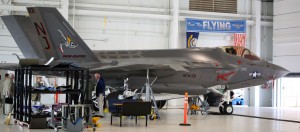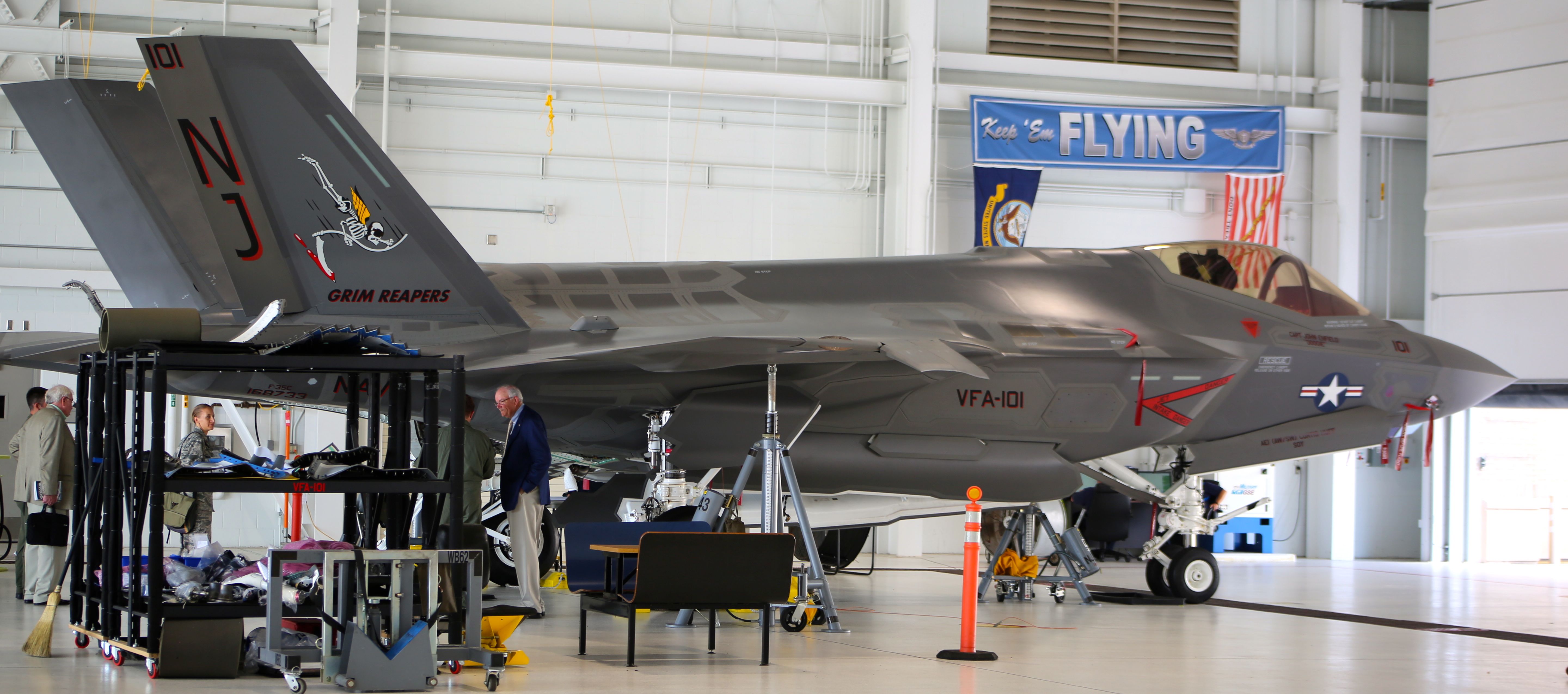2014-01-07 By Robbin Laird and Ed Timperlake
We visited the 33rd Fighter Wing during early September 2013 in the presence of Mike Wynne the 21ST Secretary of USAF. We collectively were given a professional briefing on the roll out of the F-35 to the three services, including visiting the Navy and Marine Squadrons.
A key aspect, which is not widely appreciated, is the impact of the design focus on a JOINT strike fighter (JSF) on the USN F-35C variant of the aircraft. As Commander “Rags” Dorn XO of F-35-C squadron the “Grim Reapers” put it during the visit:
The USN benefits from being co-located on Eglin, AFB with our JOINT Strike Fighter sister services.
Flying the last JSF variant to be introduced, the Navy has been harvesting the work the USAF and USMC have done on the plane as we stand up our squadron.
We have worked closely with our sister services as they received delivery and began initial flight operations over the past year and we are leveraging their experience to shape the way ahead for the JSF aircraft carrier variant.
The USN is going last among the three US services to operate the F-35.
Consequently they benefit from a number of efforts by the USMC and the USAF as they IOC their aircraft before the USN does.
There is simply the fact that Grim Reapers are literally across the hall from VMFAT-501 “Warlords” and also in close proximity with USAF 33rd Wing “Nomads”.

Both AF and Marine pilots will have logged significant flying experience with the F-35 and the pilots can freely discuss their experiences with the USN. Flying safety lessons learned will be invaluable.
The ready rooms are where the air power revolution occurs.
(For a discussion of the role of the ready room as a driver of innovation see the following:
https://sldinfo.com/the-ready-room-as-the-learning-center-for-air-combat/).
By sharing experience across three ready rooms, the pilots can shape a combat learning revolution.
As Lt. Col. Berke put it, “the pilots for fifth generation aircraft have to unlearn several of their instincts and to shape new ones.”
By shaping a much larger critical mass than simply Navy pilots, the broader F-35 pilot community provides a significant pool of evolving knowledge and can provide an important impact on innovation.
The maintainers at Eglin are shaping the approaches, procedures and manuals for a common approach. It is clear that the maintainers among the services talk regularly and the commonality of the systems provides a significant cross-learning advantage.
The experience of the USMC and USAF maintainers in other programs is leading to acceleration in shaping the F-35 maintenance approach. During the visit, the maintainers provide examples of how bringing past experience forward to the program allowed them to shape what they believe will be a more realistic and common approach to maintenance.
Both for Allies and US the weapons are common throughout the program. Notably, the F-35A and F-35C fit the weapons exactly the same. As the USAF deploys earlier with the aircraft, their experience in weapons loading, use and maintenance can be provided directly to the USN as well.
Emerging fleet combat con-ops, which will be an open ended generational iterative process for the F-35 will lead to a significant increase in combat capabilities as it is deployed. As a matter of combat necessity the impact of the F-35, is being looked at by MAWTS at Yuma working with legacy systems especially F/A-18.
This integration of F-35 with legacy systems can be a driver in innovation.
The USMC will lead the deployment of F-35s working with their legacy Hornets. The USAF will do the same with their Eagles and Vipers. Both services will work through how to best leverage their legacy systems with the deployment of the F-35s can provide valuable experience for the Navy to harvest as well.
In other words, the F-35C is part of a joint experience and as the USN deploys its first F-35s it can build on the earlier USMC and USAF efforts and then move forward in interactive learning with those services and the F-35 partners.
Originally published 2013-09-15


